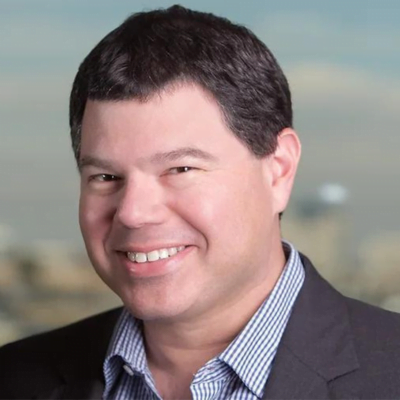Barrett Media produces over 20 stories per day on the music, news, and sports media industries. Stay updated on the latest happenings by signing up to receive our newsletters straight to your inbox.
If you’re in one of the numerous Facebook groups for radio folks like Radio Peeps or The Broadcasting Club, you’ve seen a number of recent arguments where everyone argues like angry badgers about whether “radio is dead, I met a 23-year-old who’s never listened to radio” or “radio is alive and well, I met a 12-year-old who sang our jingle back to me.” The discussions have been more numerous lately, and some get a bit heated.
To all of this, I have two big points to make.
1. One person’s view does not reflect what everyone else is experiencing.
Even recently, I’ve seen several comments on one of these Facebook group posts from someone who insisted radio is fine because in *his* market, at *his* station, everything is fine and *he* hears from listeners all the time and *he* knows kids who definitely listen to radio so it’s alive and well and he’ll put money on it.
This is the difference between a micro view and a macro view. Yes, there are probably pockets where radio is doing fine. There are likely some jocks and PDs who are enjoying rockstar status in their communities and drawing tons of people to remotes and getting their phones blown up every time they do a break. But is that the same across the entire industry?
Going back to Edison Research’s “Share of Ear” report, the most recent edition from earlier this year shows that AM/FM radio (including stations’ streams) still commands the largest chunk of all audio listening among Americans 13+. That number is 36% of listening, with streaming coming in second at 20%. So, we get more than a third of their listening day!
There are a couple of pretty big “but”s involved.
- That 36% share is down a point from the previous survey, while streaming grew a point.
- A decade ago, radio’s listening in Share of Ear was 52%, representing a 16-point-percentage drop over the past 10 years.
- If we delve into the younger end of the demographic, Edison reported in July that, among Americans aged 13-22, AM/FM radio is *third* for audio share with only 20%, noticeably behind streaming (37%) and music videos on YouTube (23%).
If your station dropped 16% of your audience from your market-leading 8-share to a 6.7, would you – or your management – still be worry-free about being #1 in the market, or would everyone be a bit concerned that the station is losing numbers while the crosstown competitor is creeping up on you? Especially as the older demos – the ones that more heavily support you – age out and you are more dependent on younger demos that listen more to your crosstown competition?
A singular encounter on a personal level doesn’t predict what the majority of the industry is experiencing. Claiming that “radio is fine” because you’ve personally built a solid listener base or met a rabid fan in their teens is like denying that heart disease is the leading cause of death in the U.S. because your cholesterol numbers are fine.
I’ve said this before and I’ll say it again: Time for radio to stop resting on its laurels and touting its reign as a reason to listen. The industry as a whole is competing against a whole new landscape, and beating our chests and yelling, “We’re #1!” is not going to convince people to continue listening.
Time to start actively promoting what makes radio compelling – and actually walking the talk. Time to start inviting and enticing people in new and different ways to come to our party because simply yelling about how we have the biggest party is not getting people in the door anymore. And today’s 13-22-year-olds are tomorrow’s 25-54-year-olds. If we don’t invite them in and get them through the door now, they’ll form the habits of going elsewhere for audio and continue those behaviors when they have disposable income.
2. The public narrative about radio is not great, and that matters.
I recently went to a conference where someone spoke on the importance of strategic narratives and how they influence the greater population. He gave AI as an example and showed how, even if AI is a positive force, we’ve been conditioned by years of public and pop-culture perception to believe it’s evil.
The speaker put up a slide of how AI has been portrayed in movies over the past 50 years, and, by an almost 2-to-1 margin, AI has been positioned as evil and coming to annihilate all of us over AI, helping us and being good to humanity. Skynet, the Agents running the Matrix and HAL-9000, are overpowering WALL-E. And that’s shaped unconscious bias in a good number of humans who are now afraid of AI and its potential destructive path.
Radio has a similar image problem. We’re not doing a good enough PR job to combat the emerging public narrative that our medium is stodgy, outdated, and only for emergencies. When was the last time you saw a movie or TV show where one of the main characters was on the radio, or a pivotal moment involved a radio? On the flipside, the #1 show on Netflix (at the time I write this), “Nobody Wants This,” features a podcaster as one of the main characters, and the podcast plays a sizable role in the plot.
Talking amongst ourselves about our value is not going to get the job done. I agree with several of Sean Ross’s points in his “Reclaiming Not Just Listening, But Listeners” column from last week, where he called out marketing and concentrating on the new generation of listeners as necessary areas of attention. Radio needs to tell its story and market its compelling value more, not just rely on the fact that it has its own transmitter. Find ways of being more visible in the community. And leadership needs to pony up money for that exposure.
In addition, giving younger listeners reasons to listen is imperative. Because if we lose them now while they’re still forming lifetime habits, we likely lose them forever. And using the same playbook from 1987 is not going to help us win in 2024 – that means we need to embrace new formats, new thinking, new talent, new types of content. It may be uncomfortable, but riding the popularity wave long after it crashed into the shore is what beached Blockbuster Video.

A former air personality and industry journalist, Keith Berman worked at the late Radio & Records for several years, where he held a number of positions before being promoted to format editor. While at R&R, he also served as a writer and reporter, covering breaking news; authoring weekly columns, format roundups and features; and contributing heavily to Street Talk Daily. When R&R folded, he co-founded RAMP (Radio and Music Pros) and spent 3 years covering radio and record labels before taking a hiatus from the industry. His experiences also include time on-air at stations in Connecticut, Boston and Southern California. He can be reached at KeithBerman@gmail.com.









